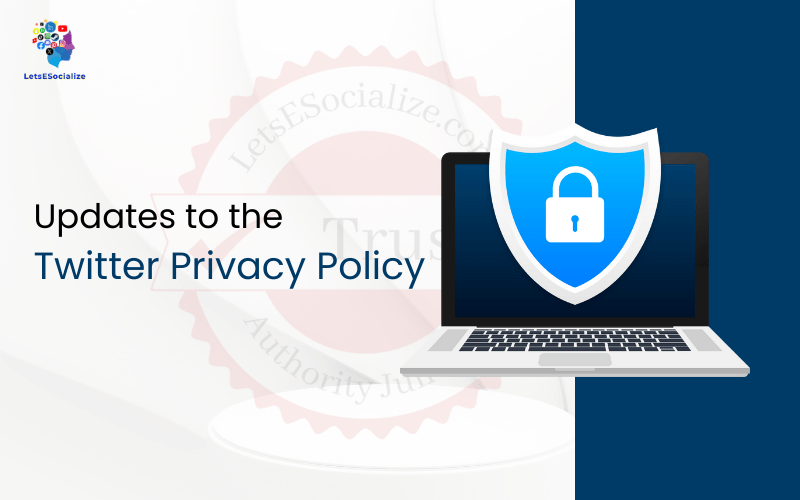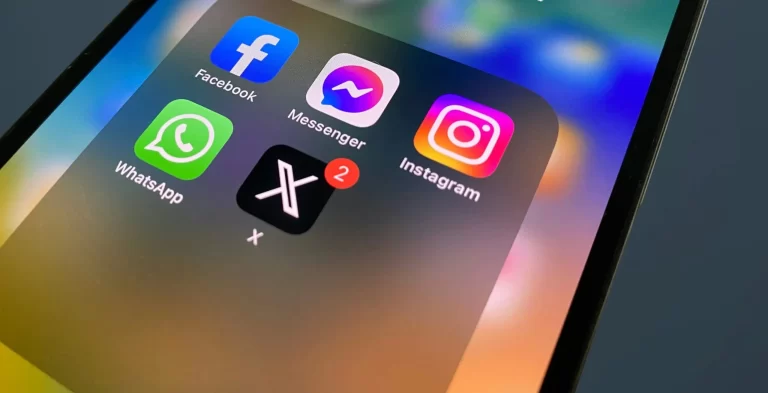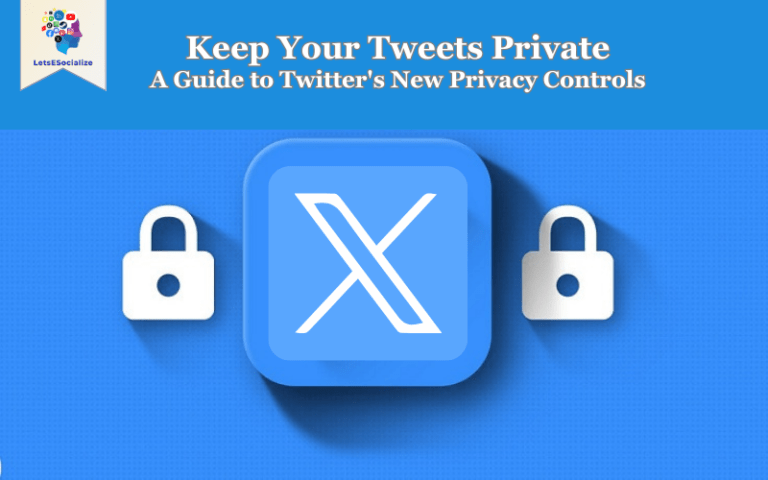Twitter’s privacy policy outlines how user information is collected, used, and shared. As a platform that is constantly evolving, Twitter occasionally needs to update to Twitter privacy policy to reflect new products, features, and data practices.
In this comprehensive guide, we’ll dive into the key changes coming to Twitter’s privacy policy effective September 29, 2023, and what users need to know.
Table of Contents
Overview of Upcoming Changes
On September 29th, 2023, Twitter will be implementing notable updates to their privacy policy. These changes reflect new services as well as clarifying language around existing data collection and usage practices.
Some of the key areas being updated include:
- Expanded information collected from user profiles and activities
- More details on how Twitter utilizes user data for personalized services like recommendations
- New disclosures around ad partners and ad measurement/analytics
- Clarified language on information sharing with business partners and affiliates
- New section on data retention and deletion practices
While these updates allow Twitter to be more transparent, users need to understand how the changes may affect their privacy. We’ll break down what’s changing and why Twitter is making these updates.
Also read: Understanding Twitter Privacy Settings
Background on Twitter Privacy Policy
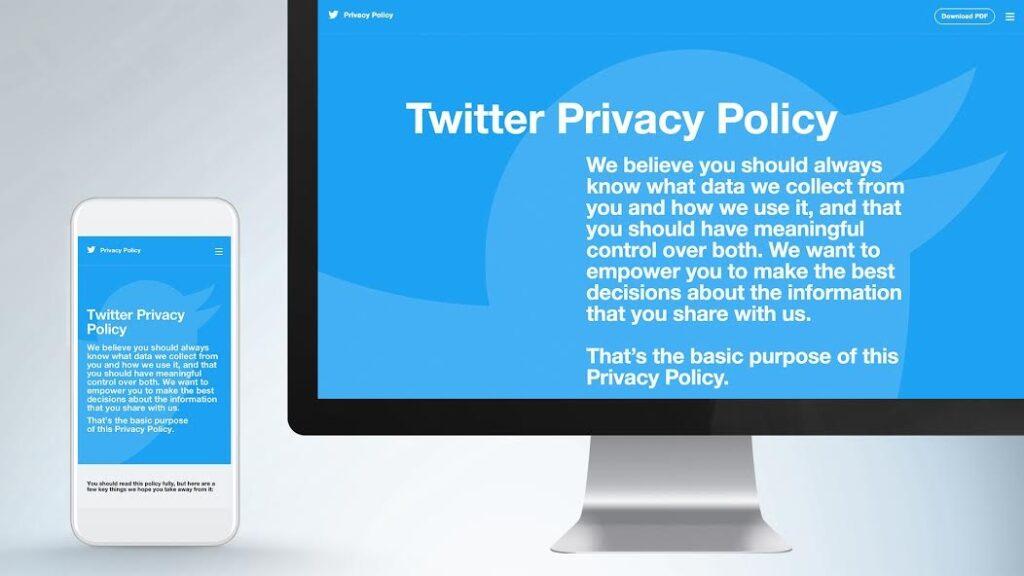
First, some background on Twitter’s overall privacy policy. The privacy policy outlines what information Twitter collects from users, how they use that information, and how users can control their privacy settings.
Some key things to know:
- Twitter’s privacy policy applies to all Twitter users worldwide
- It covers user data collected across Twitter’s sites, apps, widgets, and other services
- Twitter may update the policy at any time and will notify users of substantial changes
- By using Twitter services, users agree to the collection and usage of their information per the policy
Twitter encourages users to review the privacy policy regularly to stay up to date. Now, let’s look at what’s changing, effective September 29th, 2023.
Expanded User Information Collected
One of the biggest updates is that Twitter will collect additional categories of user information to improve the services and user experience. Here are some of the new data points Twitter will gather:
- Precise location data: With user permission, Twitter will collect GPS-level location information from devices to provide location-specific services like local trends and story recommendations.
- App and device usage: Twitter will gather more specific data on how users interact with the app across devices, such as clicks, taps, time spent, and other activities.
- Contacts: Uploading your contact list enables Twitter to make connections and recommendations based on who you know.
- Inferences: Twitter will make inferences about user interests, demographics, and more based on activities to personalize content.
This expanded profile information allows Twitter to learn more about its users and tailor services accordingly. However, it does mean sharing more data with Twitter. Users should review the new policy to understand exactly what additional information will be collected starting September 29th.
Details on Personalized Services
In addition to collecting more user data, Twitter is also providing more transparency into how they leverage that data for personalized services. These include:
- Tailored recommendations – Twitter will use information like who you follow, tweet activity, interests, and demographics to recommend relevant accounts, topics, and content.
- Ranked relevance – Machine learning models will analyze your interactions to determine the relevance and priority of Tweets, Topics, etc., to show you more pertinent content.
- Lookalike audiences – Advertisers can target ads using the demographics and interests of existing customers who resemble their desired audience.
- Personalized ads – Based on your inferred interests and activity within Twitter, you may see ads that align with your likely preferences.
While personalized services create a more tailored Twitter experience, some users may feel uncomfortable with how much of their data informs these features. You can manage personalized recommendations and ads in your privacy settings.
Ad Partners and Measurement

Several updates aim to provide more transparency around Twitter’s usage of user data for advertising purposes:
- Expanded ad partners – Twitter shares certain user data like device identifiers, demographics, interests, and activities with a wider range of ad partners to show more relevant advertising across sites and apps.
- Ad measurement – Twitter uses your activity to measure ad performance, including conversion tracking and analyzing whether you took an action after seeing an ad.
- Ad analytics – Usage data may be shared with analytics partners like Nielsen and Comscore to provide aggregated demographic and interest data for improving ad relevance.
As Twitter expands its advertising capabilities, it’s collecting and sharing more user information with ad partners. If you have concerns, you can opt out of personalized ads and some types of ad measurement in your settings.
Sharing Information with Partners
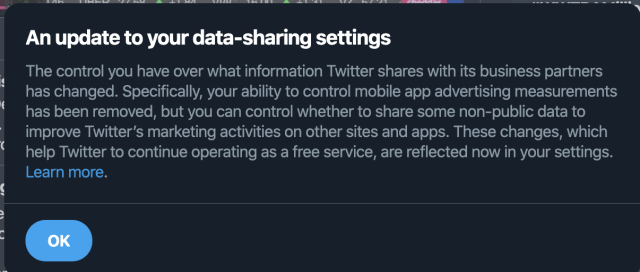
Twitter is updating how it describes sharing user data with business partners and affiliates:
- User data like device identifiers, location, demographics, interests, and behavior may be shared with business partners to allow them to market and advertise to Twitter audiences or measure ad performance.
- Partners include data resellers, market researchers, merchants, advertisers, web and app publishers, and more.
- Twitter may share aggregated, anonymized data with partners to identify market trends and opportunities.
While this data sharing supports Twitter’s operations, it does mean more of your information is being accessed by third parties. Twitter says it requires partners to adhere to proper data protection standards.
New Data Retention and Deletion Details
Twitter is adding a section clarifying how long they store user data and content:
- Accounts and publicly available content are retained indefinitely. This is for the public record, and users can delete accounts and tweets if they choose.
- Information used for advertising purposes may be retained for up to 3 years. Aggregated, anonymized data may be kept longer.
- Other usage data like device identifiers, location, interests, etc., are generally retained until no longer necessary for authorized purposes. Accounts deleted by users are scrubbed within 30 days.
- Inactive accounts may be removed after prolonged periods depending on location. Twitter will notify users prior to deletion.
These updates provide more transparency into Twitter’s data retention practices. In general, most data is kept as long as it’s useful for serving users, with discretion for removing accounts, cleaning up storage, and ensuring regulatory compliance.
Analyzing the Key Privacy Policy Changes
In reviewing the upcoming changes to Twitter privacy policy, there are a few key takeaways:
- Twitter is collecting more specific user profile data like location, app activity, contacts to improve personalization
- They are providing more clarity around how user data powers algorithmic services like tailored recommendations and relevance-ranking
- Expanded data sharing with ad partners aims to enhance ad targeting and analytics across Twitter’s ecosystem
- Clarified language around partners, retention periods, and deletion policies makes certain practices more transparent
The changes reflect Twitter’s evolution as a company but do mean users are sharing more data. While personalized services and relevant ads can improve the Twitter experience, it’s important to find the right balance with user privacy.
These policy updates allow Twitter to be more transparent about existing practices that may have been unclear. However, users should thoroughly review the new policy to ensure they understand how their information is being used.
Twitter Privacy Policy Updates Effective September 29th, 2023
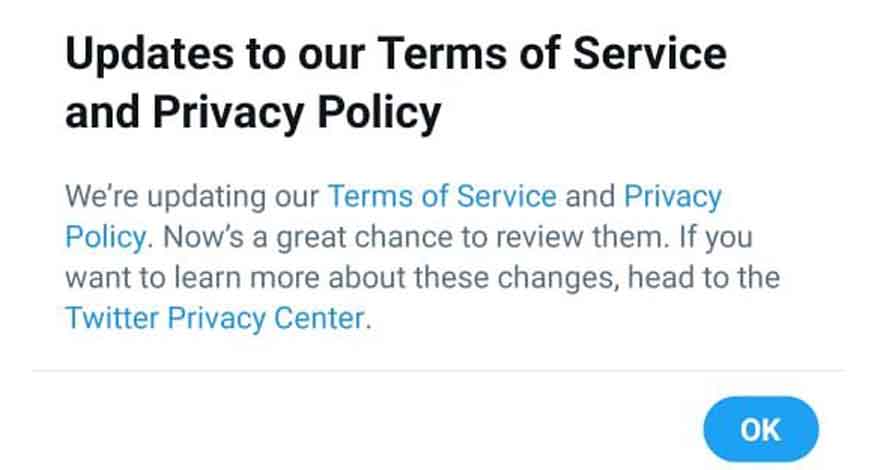
Now that we’ve summarized the key changes let’s look at the specific Twitter privacy policy updates going into effect on September 29th, 2023:
Collection of additional user information
Twitter will collect expanded profile data, including precise location information, app/device usage, contacts, and inferences about interests/demographics to improve personalization.
Details on personalized services
Twitter will leverage information about you to provide tailored recommendations, rank the relevance of content, enable lookalike ad targeting, and show you ads aligned with your inferred interests.
Expanded advertising partnerships
User data will be shared with more ad partners to provide relevant ads on and off Twitter. More user activity will also be analyzed to evaluate and optimize ad performance.
Information sharing with business partners
Partners like data resellers, market researchers, and advertisers may receive user data like identifiers, demographics, interests, and behavior to market products, run analytics, etc.
Retention and deletion policies
Twitter clarified its data retention periods and account deletion practices. Most data is kept as long as useful. Accounts are scrubbed within 30 days of user deletion.
Ongoing policy updates
As always, Twitter may continue to update its privacy policy in the future as its services evolve. Users should review changes to understand how their information may be used.
These updates aim to provide more transparency and give users more control over their privacy based on the additional data Twitter will access. Let’s look at some analysis of what these changes mean.
Analysis of Key Privacy Considerations
The upcoming changes to Twitter’s privacy policy raise some important considerations for users to think through:
1. Weighing personalized services against data sharing
- The benefit: Services like tailored recommendations and lookalike audiences can improve the Twitter experience.
- The tradeoff: These rely on Twitter gathering more specific user data like locations, app activity, contact lists, and interests.
2. Reviewing expanded ad partnerships
- The benefit: More ad partners can help show users relevant ads across sites and apps.
- The tradeoff: Data like device IDs, demographics, and online activity is shared more widely.
3. Evaluating information disclosure to partners
- The benefit: Sharing data can enable more business opportunities and analytics for Twitter.
- The tradeoff: Partners receive user data like identifiers, location, interests, and behaviour for their purposes.
4. Assessing Twitter’s data retention periods
- The benefit: Clearly defined retention policies add transparency.
- The tradeoff: Much of users’ data is stored as long as it remains useful, often for years.
Understanding these balancing acts allows users to make informed privacy choices based on their preferences.
Tips for Managing Your Twitter Privacy

Given the privacy policy changes, here are some tips for managing your privacy settings on Twitter:
- Review the new privacy policy – Understand exactly what information Twitter is now collecting and how it’s being used.
- Limit ad personalization – Opt out of personalized ads and some types of ad measurement and targeting in your settings.
- Be selective when sharing contacts – Uploading your contacts enables Twitter to connect you with people you know but also share that data.
- Turn off location services – Disable location collection in your settings if you don’t want Twitter accessing your precise device location.
- Set account to private – By making your account private, your Tweets will only be visible to approved followers.
- Practice good account security – Use strong passwords, enable two-factor authentication, and don’t click suspicious links to protect your account.
- Remove old tweets – Go through your Twitter history and delete outdated tweets you no longer want public and accessible.
- Download your Twitter data – You can request an archive of the data Twitter has collected on you to review.
Staying up to date on Twitter’s privacy policy and carefully managing your settings, profile information, and activity on the platform can help optimize your privacy.
The Future of Twitter Privacy Policy
Privacy will continue to be an evolving issue as Twitter develops new products and expands its data integration across platforms. Some possibilities analysts foresee around Twitter’s approach to privacy include:
- More granular privacy controls – Give users more options to limit data collection and usage for specific services.
- Anonymized data features – Develop alternative versions of personalized services that rely strictly on aggregated, anonymized datasets.
- Encrypted data – Increase the use of encryption, decentralization, and privacy-preserving computations like differential privacy to protect user information.
- Transparency reports – Share more detailed statistics on government/law enforcement requests for user data, as well as overall platform privacy metrics.
- Independent audits – Conduct regular third-party privacy audits and share results publicly to build user trust.
- Privacy-centric staff training – Instill privacy as a core cultural value through training at all levels on responsible data practices.
By continuing to make privacy a priority as the company evolves, Twitter can give users more control over their data while still delivering innovative services.
Conclusion
Twitter’s upcoming privacy policy changes reflect the platform’s growth as it looks to improve personalized services and advertising relevancy based on expanded user data collection and sharing. While this powers a more tailored experience, users should understand the tradeoffs around increased data usage by Twitter and its partners.
Reviewing the new policy and proactively managing your privacy settings allows you to make informed choices based on your comfort level. As Twitter further opens up about how it leverages user information, transparency can enable users to protect their privacy better.
How companies balance privacy and innovation remains an ongoing discussion. But Twitter updating its privacy policy to clarify new data practices provides an opportunity for users to reassess what information they feel comfortable sharing.
What do you think about the upcoming changes to Twitter’s privacy policy? Which aspects are most concerning or beneficial in your view? Let me know in the comments!

